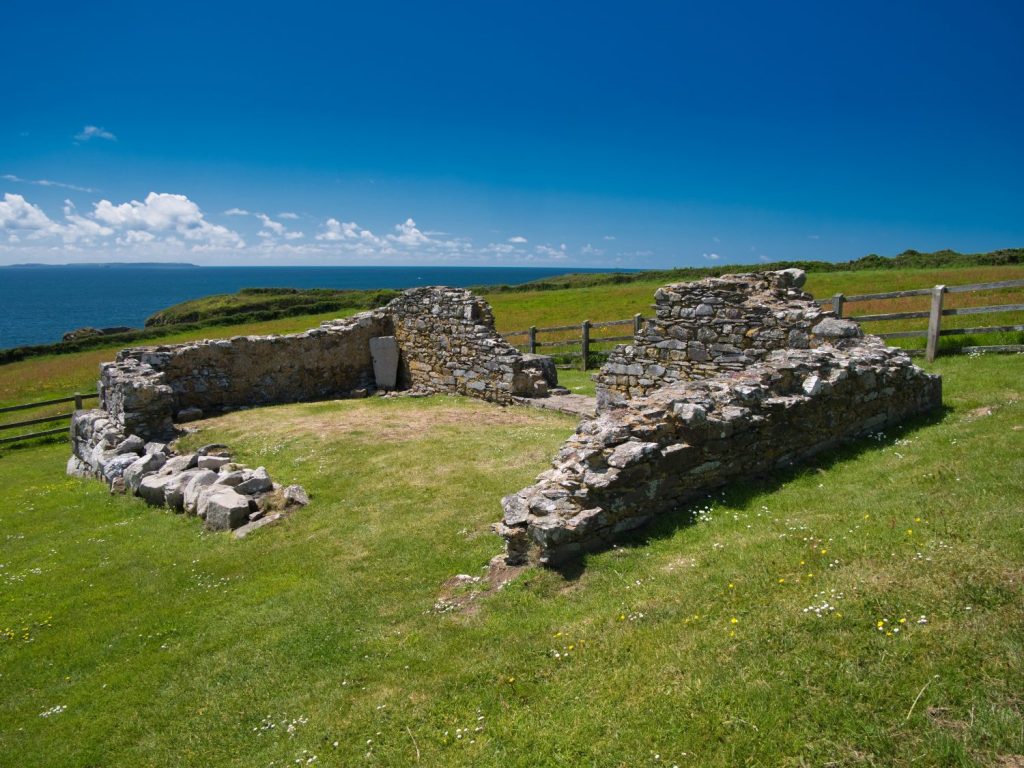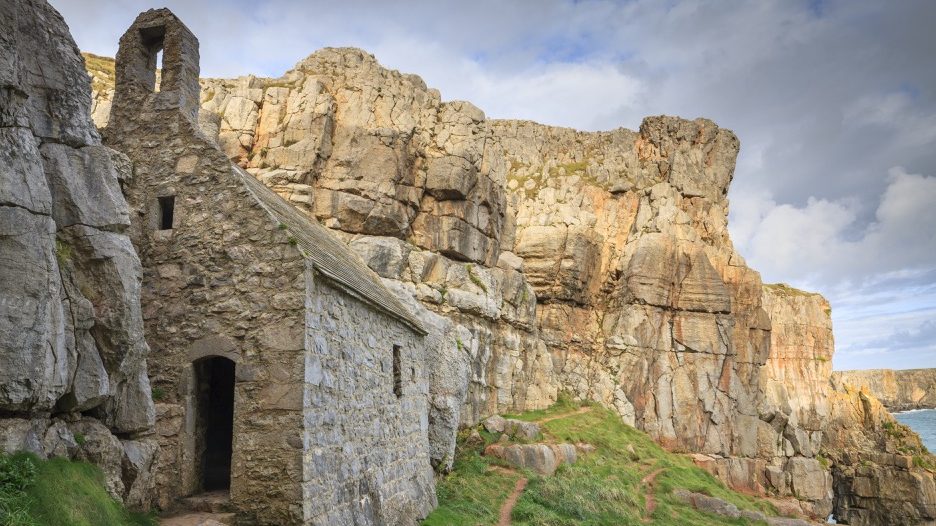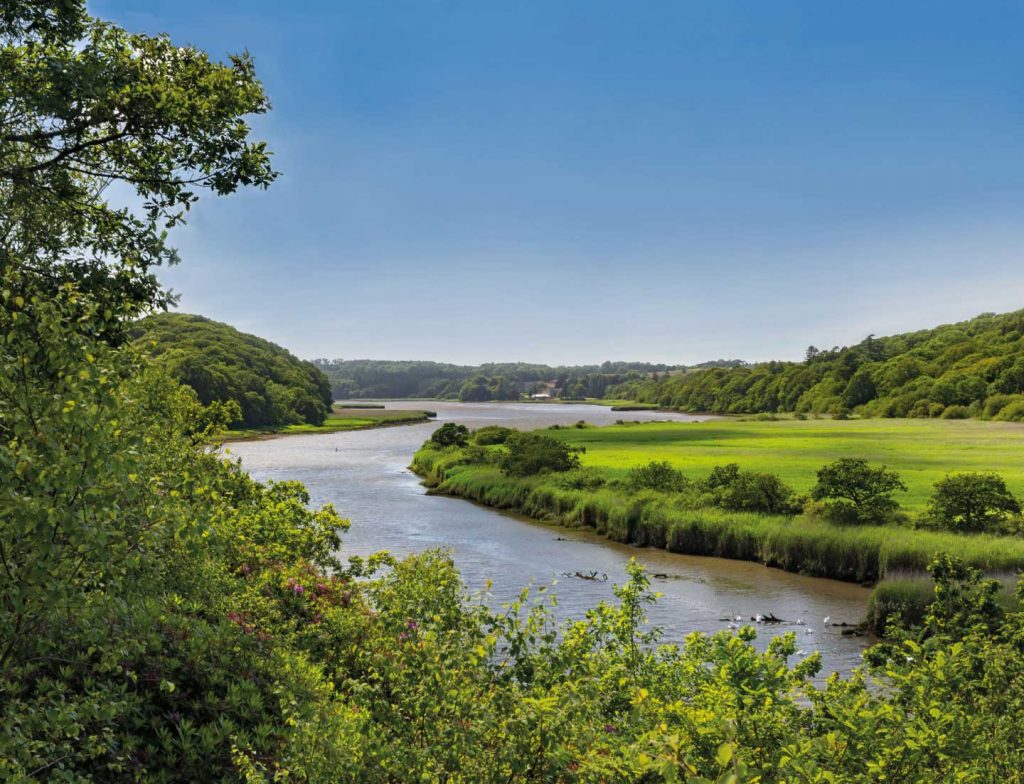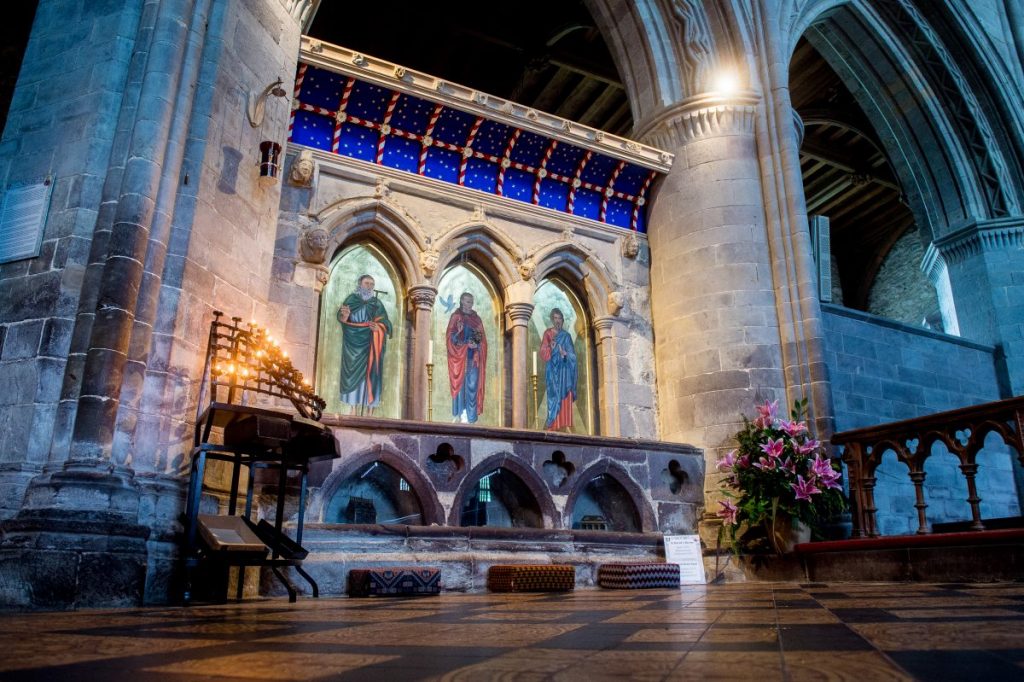The National Park is full of archaeology. Around almost every corner you’ll find some glimpse of the past, but here are a few suggestions of particular places to go.
In addition to these, remember that the National Park Authority also manages two important heritage sites which are open to the public – Castell Henllys Iron Age Village and Carew Castle and Tidal Mill.
It’s also worth noting that exhibitions at Oriel y Parc Gallery and Visitor Centre often feature ancient artefacts and items from Amgueddfa Cymru-National Museum Wales’ natural history collections.
Pentre Ifan Burial Chamber
Probably one of Wales’ most famous monuments, Pentre Ifan burial chamber has become an icon for the Pembrokeshire Coast National Park Authority. The monument dates back to the Neolithic era, a time when people were first starting to live in settled communities and farm the land.
Up until then, people had lived in small, nomadic groups and hunted and gathered wild foods. Growing crops meant that people had to be in one place all year round and they developed new ties to the land which are reflected in the building of permanent monuments like Pentre Ifan.
What we see today is not how Pentre Ifan would have looked. Today’s stone structure was probably entirely or partly hidden under a massive mound of earth and stones. The stones we see now would have been the entrance into the heart of the burial chamber, as well as forming a courtyard where rituals and ceremonies took place.
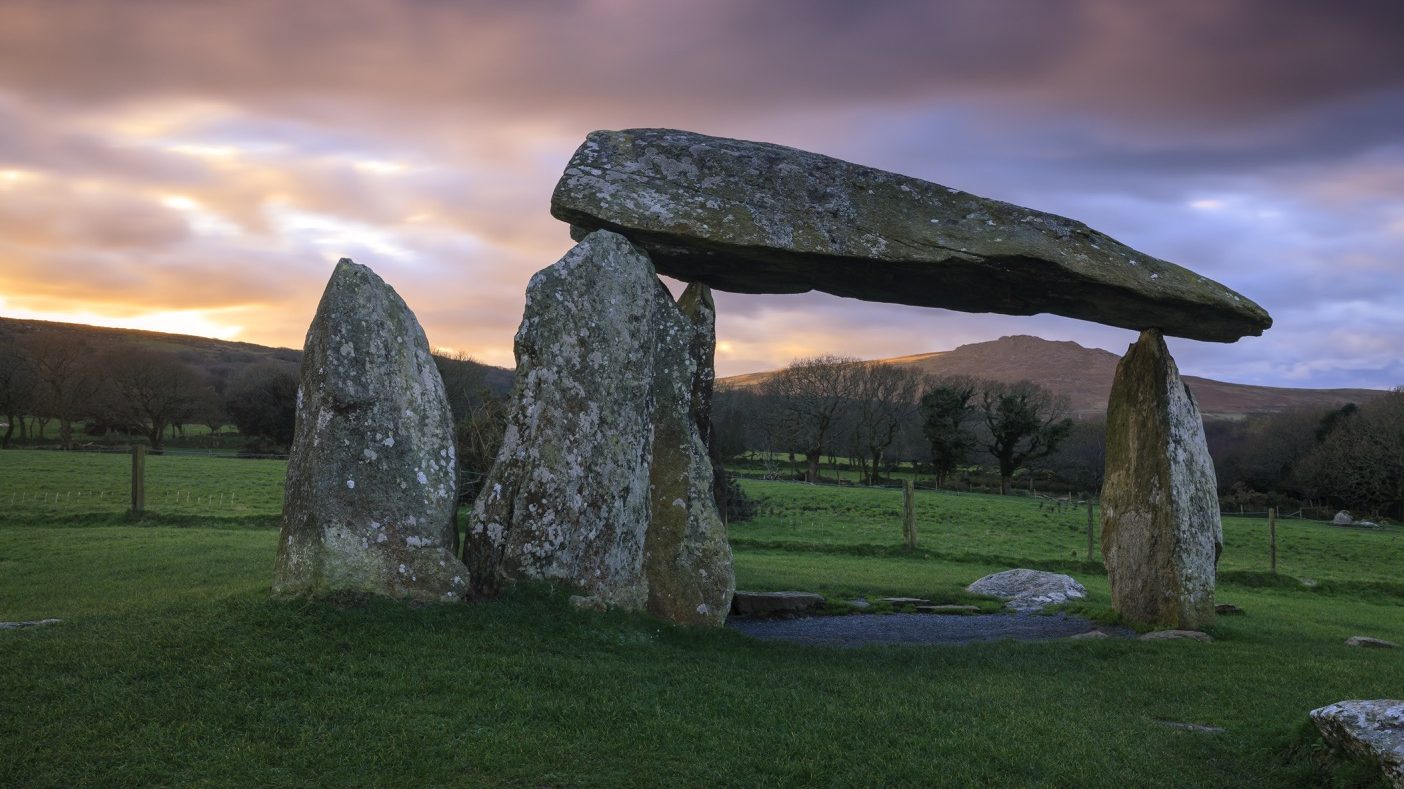
Angle
The village of Angle today feels like it’s literally at the end of the road – travel any further and you’ll end up in the sea! But during the Medieval period, Angle would have been a thriving and important port and trading post. Both East and West Angle would have provided sheltered anchorages for boats of all shapes and sizes, and during the Medieval period transport of goods and people by sea was easier than transport overland.
Traces of its Medieval past survive all over the Angle peninsula. As you drive towards the village, you’ll notice narrow, parallel lines of field boundaries; these were the Medieval strip fields which have been incorporated into later farming. The fine church also has Medieval origins and the Tower House is an unusual Medieval building which is open for the public to visit. The Tower House is a high status building, and would have been a fortified dwelling for an important gentry family.
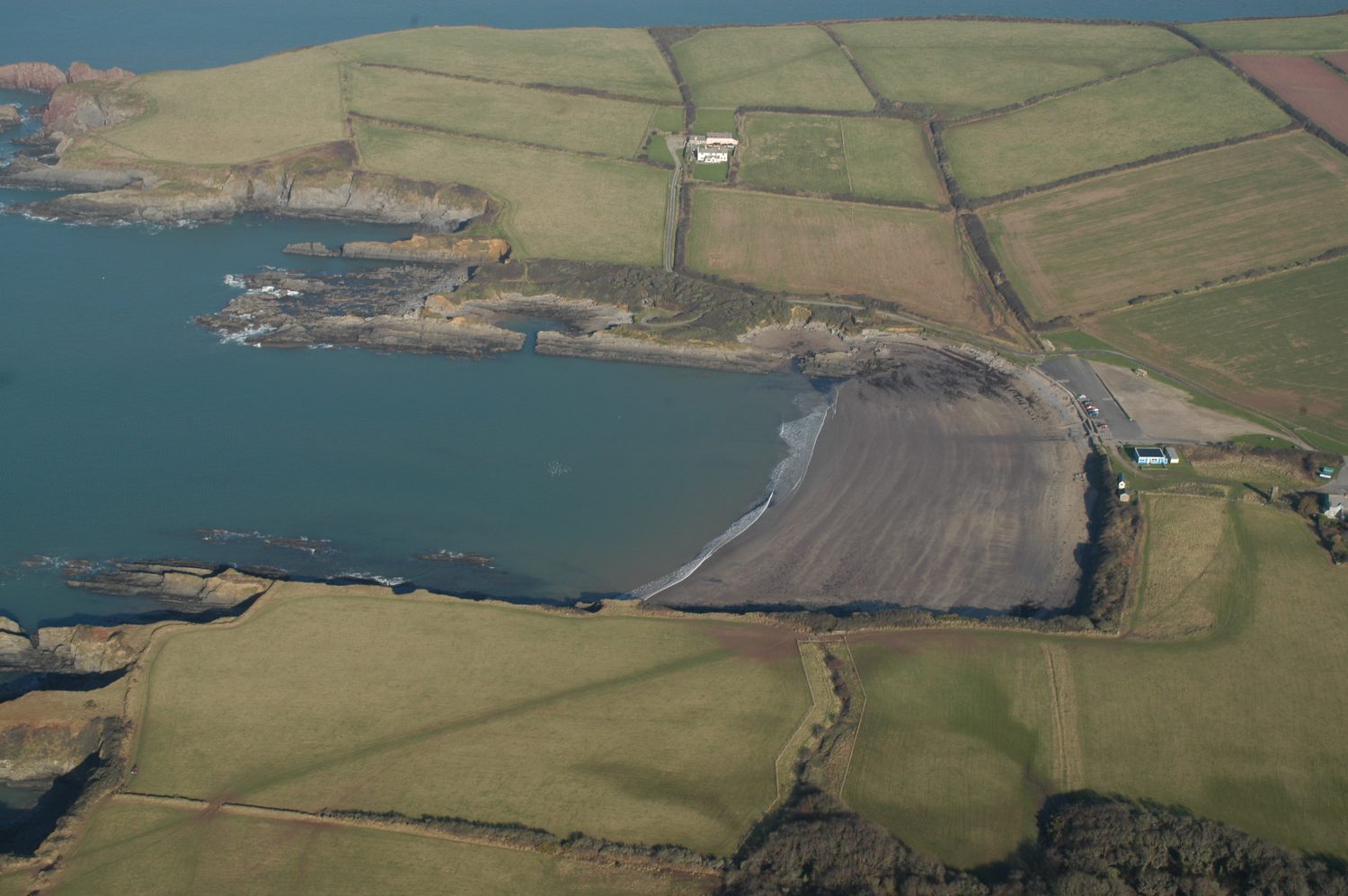 West Angle Bay
West Angle Bay
In a nearby field is the dovecote, also Medieval and, once again, signalling that someone very wealthy lived here. During this period, only the Lords of the Manor and parish priests were allowed to build dovecotes, and they were very much a sign of wealth and status!
At West Angle Bay you may see the remains of stone-lined burials, called cist burials, eroding out of the cliffs. Archaeological excavation of this site showed that the burials date back to the 6th and 7th centuries AD. This cemetery is earlier than the rest of the village, and may represent the original settlement before the wealthy Medieval village was founded.
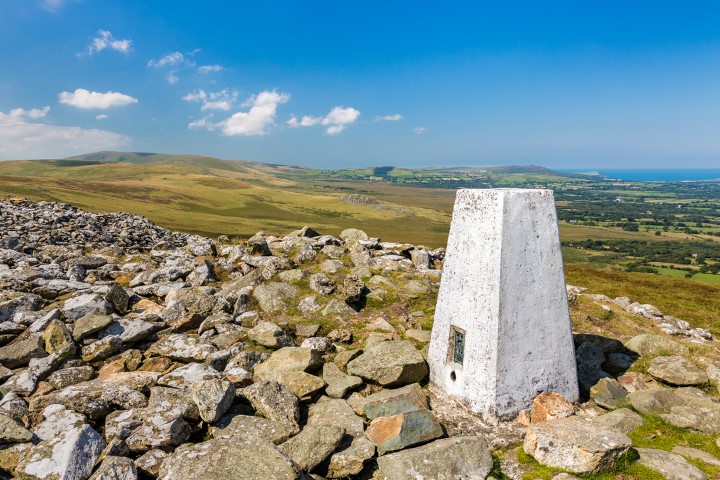
Foel Drygarn
At the eastern end of the Preseli range in the National Park is the fantastic hilltop of Foel Drygarn, a real must see. The Bronze Age remains of stone ramparts, banks and ditches circle the crest adding to the surrounding landscape of natural cliffs and crags. Don’t forget to bring a camera.
The area is dominated by three massive and well-preserved Bronze Age cairns, which is a real testament to the respect felt by the Celts to their dead ancestors, as these sacred burial places, which pre-date the Iron Age, were left untouched by the Iron Age fort builders.
Many platforms can still be seen today providing the heather isn’t too high. The fort is divided up into three defended enclosures, with gaps in the defences which mark the original entrances to the fort. In the past over 220 house platforms have been identified, some of which have been excavated.
There have been numerous interesting finds on the site, including Iron Age and Roman spindle whorls, pottery and stone vessels, glass beads and jet rings. Most of these finds can now be seen at Tenby Museum.
